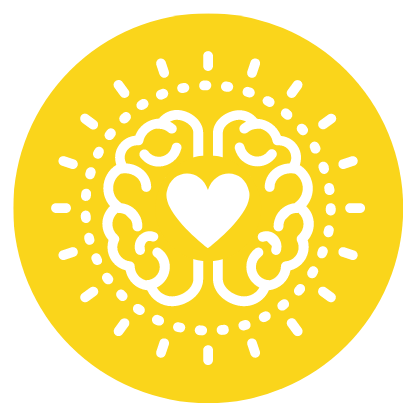Take the first step toward achieving your goals; learn the coaching process for behavioral change.
Marshall Goldsmith, an esteemed executive coach, outlines the steps in his behavioral coaching process in the video "Steps in the Coaching Process: Coaching For Behavioral Change." His process is highly transferable, and requires clients to get confidential feedback from key stakeholders, pick important behaviors to improve, talk to their coworkers, and follow up regularly. He emphasizes the need for efficiency, feedforward instead of feedback, and the importance of agreements between the client and their manager. Goldsmith's process involves both the client and the stakeholders, with the client expressing gratitude and seeking ideas for improvement, and the stakeholders letting go of the past, being honest, and offering positive and supportive feedback. Finally, the client follows up with their stakeholders and Goldsmith provides feedforward advice. This process of coaching is an efficient and effective way to achieve behavioral change.
Learning Outline
1. Understand the process of coaching and how it is highly transferable.
2. Determine what is required to reach the end goal and have a low tolerance for wasting time.
3. Agree on who the key stakeholders are.
4. Interview the key stakeholders to determine what the person is doing well and what needs to be changed.
5. Write a confidential report for the coaching client.
6. Have the coaching client and their manager agree that the process is a good one.
7. Have the coaching client talk to their co-workers about what they have learned.
8. Ask the stakeholders to let go of the past and tell the truth.
9. Ask the stakeholders to be positive and supportive.
10. Ask the stakeholders to pick something to do better as well.
11. Follow up with the stakeholders regularly.
12. Listen to the coach’s ideas but don’t critique them.
13. Remember the goal is to get better, not waste time.
14. The coach gets paid when the client gets better.
Instructional Content
The coaching process is a powerful tool for behavioral change, and in this video, we'll explore the steps and strategies that can help you use it effectively. Coaching for Behavioral Change is highly transferable, and has been used successfully by organizations of all sizes.
The first step in coaching for behavioral change is to understand what is required. This includes getting confidential feedback from stakeholders, picking important behaviors to improve, following up with co-workers, and getting measured twice.
Once the stakeholders have been identified, the coach will interview each of them and ask questions about what the person is doing well, what needs to be changed, and what advice they would have for the person. The coach will then write a report based on the feedback, and present it to the coaching client.
The client and the coach then agree on who the key stakeholders are, and the coach will coach the stakeholders on how to help the client. This includes letting go of the past, being truthful, being positive and supportive, and picking something to do better themselves.
Finally, the coach will give the client feedforward, rather than feedback, and suggest ways to move forward based on their goals. It is important to note that the coach is not paid for their time, but rather for the results they get.
This video provides an overview of the steps in the coaching process for behavioral change. By following these steps, you can use it to help people achieve their goals and bring about positive change.
Leadership
For learners to become successful in their leadership development, it is important to consider the steps in the coaching process, the importance of emotional intelligence, and healthy behaviors. The coaching process will help learners to identify the areas where they need to focus in order to improve their leadership skills. In this video, the coaching process includes identifying key stakeholders, gathering feedback from them, and setting goals for improvement. This helps learners to identify areas where they need to improve and develop an action plan to reach their goals.
Emotional intelligence is also an important factor in successful leadership development. Learners must be able to identify and manage their emotions in order to better understand and relate to their peers. This includes being able to recognize the feelings and perspectives of others and how these can affect their actions and decisions.
Healthy behaviors are also important for learners to develop in order to become successful leaders. This includes things like setting clear boundaries, making sure their decisions are grounded in facts, and trusting their own judgement. Healthy behaviors are also important in order to build trust and respect with their peers and colleagues.
By taking into account the steps in the coaching process, the importance of emotional intelligence, and healthy behaviors, learners can improve their leadership skills and become successful leaders. They must be willing to take the time to identify their goals and create an action plan to reach them. They must also be willing to take the time to develop their emotional intelligence and healthy behaviors. Taking these steps will ensure that learners have the necessary skills and knowledge to become successful in their leadership roles.
Coaching
Upskilling yourself to be more successful in personal growth and professional development is a process that requires expert guidance. The video “Steps in the Coaching Process: Coaching for Behavioral Change” provides a comprehensive overview of the process, from identifying key stakeholders to gathering feedback from them to fostering feedforward, not feedback. Coaching for behavioral change is an incredibly efficient process, which is why it has been highly transferable for organizations like GE that have trained hundreds of people in this process, with fantastic results. It’s also why it works for executives, managers, and supervisors at every level of management.
It’s important to note that the success of this process lies in the client’s efforts to talk to their co-workers and receive feedforward, not feedback. It’s also essential to realize that the process is two-way: clients must receive feedback and then provide advice to their stakeholders in return. Moreover, stakeholders must remain aware of the importance of being positive and supportive and letting go of the past.
It’s not just the stakeholders who benefit from this process, however. A study by the University of Pennsylvania found that people who receive consistent coaching often report greater job satisfaction and improved performance. These results can be seen in the clients of this process, who are able to develop new skills and experiences that can help them to be more successful in their personal growth and professional development.
Emotional Intelligence
Upskilling yourself is a great way to take a proactive approach to personal growth and professional development. Emotional intelligence (EI) is a key factor in determining success in both areas. The Steps in the Coaching Process: Coaching for Behavioral Change video gives great insight into how to use EI to upskill yourself.
The video outlines the steps of a behavioral coaching process that is both time-efficient and transferable. It starts with the client and their manager agreeing that the process is the right choice, identifying key stakeholders, interviewing them to gain feedback, and then providing the client with an anonymous report. The next step is for the client to talk to their co-workers and get feedforward, not feedback. This process creates a safe, respectful environment where the client can express their goals and receive constructive advice.
Studies have shown that emotional intelligence is a key factor in determining success in both personal and professional areas. A 2018 survey of over 1,000 CEOs found that those with higher emotional intelligence were more likely to be successful in their roles. They were more likely to develop productive relationships, be more creative, and have higher levels of job satisfaction.
Upskilling yourself with emotional intelligence can be a great way to take charge of your personal growth and professional development. The Steps in the Coaching Process: Coaching for Behavioral Change video is a great resource for understanding how to use EI to upskill yourself. By following the steps outlined in the video, you can create a safe and respectful environment where you can receive constructive advice from key stakeholders and develop your emotional intelligence.
Healthy Behaviors
The video, 'Steps in the Coaching Process: Coaching for Behavioral Change', provides an excellent overview of the steps necessary for upskilling yourself to be successful in personal growth and professional development. The steps outlined in the video include getting confidential feedback from stakeholders, picking important behaviors to improve, talking to people about what you learn, involving stakeholders, following up with coworkers and managers regularly, and getting measured twice. These steps are essential to successful upskilling and will help you develop the skills needed to progress in your career.
Coaching can be an effective way to upskill yourself, as it helps you focus on improving specific behaviors and skills. By following the steps outlined in the video, you can focus on improving the areas that need the most work in order to be successful in your career. Additionally, the video emphasizes the importance of involving stakeholders, as they can offer valuable feedback that can help you make improvements. This feedback can also help you develop better relationships with your coworkers and managers.
Case studies such as that of the potential CEO in the video, demonstrate the effectiveness of coaching in improving performance and achieving desired results. The use of confidential feedback, follow-up, and measurement in the process further illustrate the importance of these steps in upskilling yourself. Additionally, the importance of being time-efficient and not wasting time is highlighted, as this is essential in achieving the desired results.
Overall, the video provides an excellent overview of the steps necessary for successful upskilling. By following the process outlined in the video, you can ensure that you are focusing on the right behaviors and skills in order to be successful in your career. Additionally, by involving stakeholders, you can get the feedback needed to make improvements and achieve the desired results.
For Learners
Watching this video on the Steps in the Coaching Process: Coaching for Behavioral Change can be incredibly beneficial to your personal growth and professional development. Learning how to use this process in your own coaching can help you develop your skills and increase your career prospects. It will help you understand the important steps in the coaching process and how they can be used to help you and your clients reach their goals.
The 'What's in it for me?' approach to learning the content of this video is a great way to make sure that you are taking what you learn and applying it to your own life. Learning how to use the coaching process to help yourself and your clients reach their goals will be beneficial for personal growth and professional development. You will also be able to use this process to help your clients reach their goals and make sure that they are getting the best results from the coaching process.
The 'What's in it for them?' approach to learning the content of this video is also beneficial. By understanding the steps in the coaching process, you will be able to use this process to help your clients reach their goals and make sure that they are getting the best results from the coaching process. This will help you build relationships with your clients and make sure that they are getting the best results from the coaching process.
The 'What's in it for us?' approach to learning the content of this video is also important. By understanding the steps in the coaching process, you will be able to use this process to help yourself and your clients reach their goals and make sure that they are getting the best results from the coaching process. This will help you build relationships with your clients and make sure that they are getting the best results from the coaching process.
Finally, the 'What's in it for the world?' approach to learning the content of this video is also important. By understanding the steps in the coaching process, you will be able to use this process to help people all over the world reach their goals and make sure that they are getting the best results from the coaching process. This will help you make a difference in the world and make sure that people are getting the best results from the coaching process.
Overall, watching this video on the Steps in the Coaching Process: Coaching for Behavioral Change can be incredibly beneficial to your personal growth and professional development. By understanding the steps in the coaching process, you will be able to use this process to help yourself
For Employers
Watching this video [Steps in the Coaching Process: Coaching For Behavioral Change/https://www.youtube.com/watch?v=Hwn_W-X2Rds] and learning the content of this video will benefit employers in many ways. First, it will help employers differentiate themselves from their competitors by showing they understand the importance of coaching and behavioral change. It will also help employers create a team that is more successful and productive. With the transferable process taught in this video, employers will be able to help their employees reach their full potential and make the most of their abilities.
In addition, by understanding the concepts in this video, employers will be able to make better decisions and create more successful products and services. This will have a positive impact on customer and client perceptions, as they will know that employers understand the importance of coaching and behavioral change. Furthermore, this video teaches employers how to use a highly efficient process to help their employees make improvements in a timely manner. This process is backed by research and has been proven to be effective.
Overall, employers will benefit from watching this video and learning the content it contains. By understanding the concepts in this video, employers will be able to create a team that is more successful, create more successful products and services, and make better decisions. This will help employers differentiate themselves from their competitors and improve customer and client perceptions. Ultimately, employers will be able to achieve better results, faster, and with less effort.
Career Path
Completing a course in Leadership based on the competencies of Coaching, Emotional Intelligence and Healthy Behaviors is a great way to level up your career path and become more employable and promotable. This course will help you gain the skills and knowledge necessary to excel in the workplace, increase your income potential and make a positive impact in high demand and high growth industries.
Watching the video ‘Steps in the Coaching Process: Coaching For Behavioral Change' and reading the transcript is a great way to start your journey. This video teaches you the steps to coaching for behavioral change and how to use this process in your own coaching. By understanding the process, you will be able to make well-informed decisions that can help you reach your career goals.
Furthermore, the transcript will provide you with further insight into the coaching process and how to use it to improve your behavior. You will also learn how to have excellent communication with your peers, direct reports and manager, in order to make sure that you are doing the right thing and getting the most out of your career.
Finally, the course will teach you how to be aware of your own emotions and how to use them to help you reach your goals. It will also help you develop the skills to stay focused and motivated in the face of challenges while helping you become more successful.
By gaining these income-producing skills, you can close the skills gap and become more employable, promotable and purposeful. You will be able to reach your career goals and make a meaningful contribution to the future of your industry. So, start your journey today and level up your career path with a course in Leadership based on Coaching, Emotional Intelligence and Healthy Behaviors.
Meaning
"It is not the strongest of the species that survives, nor the most intelligent that survives. It is the one that is the most adaptable to change." - Charles Darwin
This quote is highly relevant to the video Steps in the Coaching Process: Coaching For Behavioral Change. The video discussed how to use a coaching process to help someone learn, adapt, and grow to become a better leader. This is the key to success in the business world. Those who can adapt and change to meet the needs of the organization will be the ones that survive. This is why it is so important for learners and employers to take the steps outlined in the video to help employees become more adaptive and successful. By doing so, they will be able to become more successful long-term and have an advantage over others in their field.
Takeaway
The most important key takeaway from this video is to use a process of coaching that is highly efficient and tailored to individual clients. This includes identifying key stakeholders, giving confidential feedback, responding to feedback, setting goals and measuring progress. Additionally, it is important to be time-efficient, positive, and supportive when giving feedback.

 34 Creds - Leadership
34 Creds - Leadership












